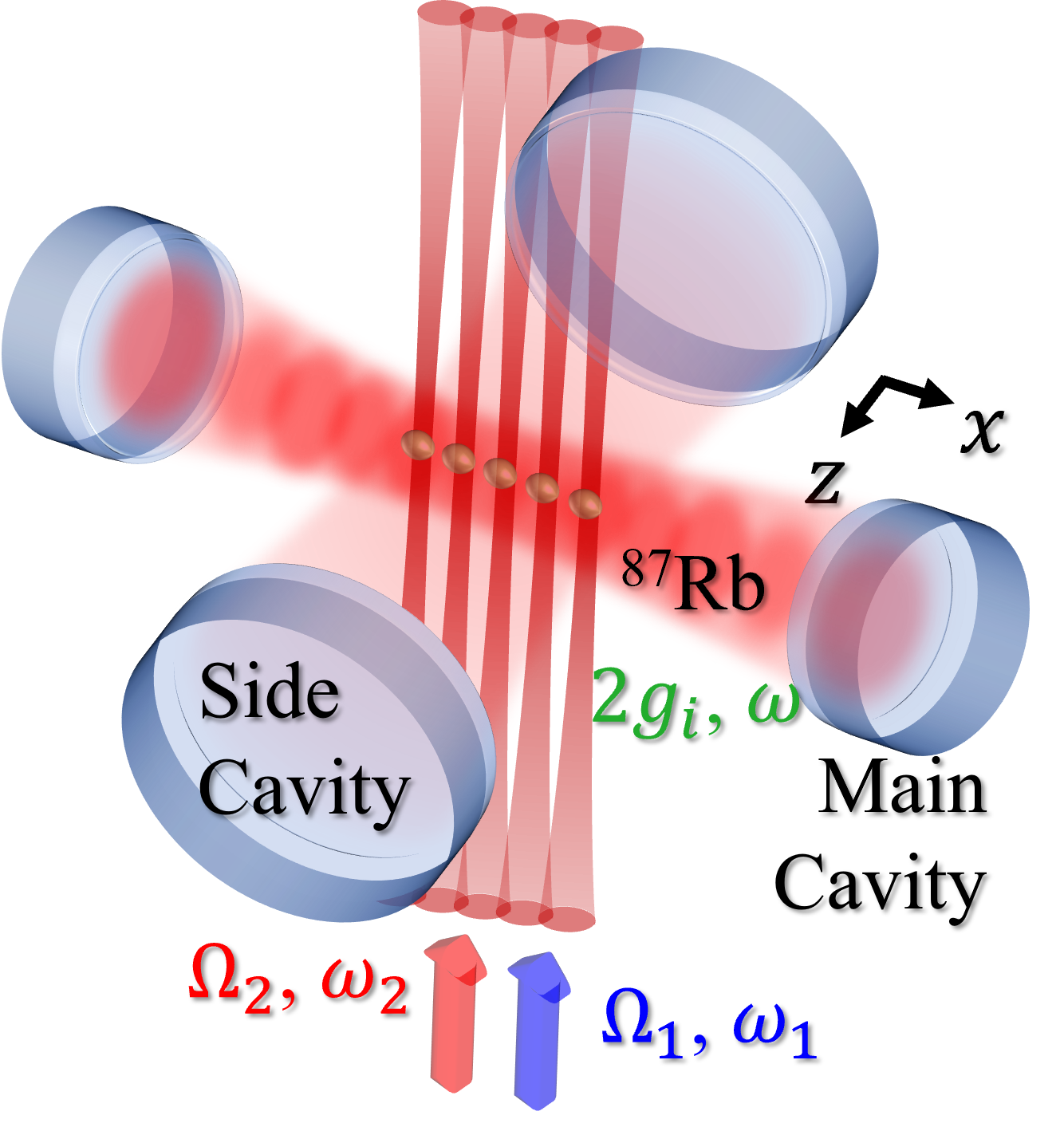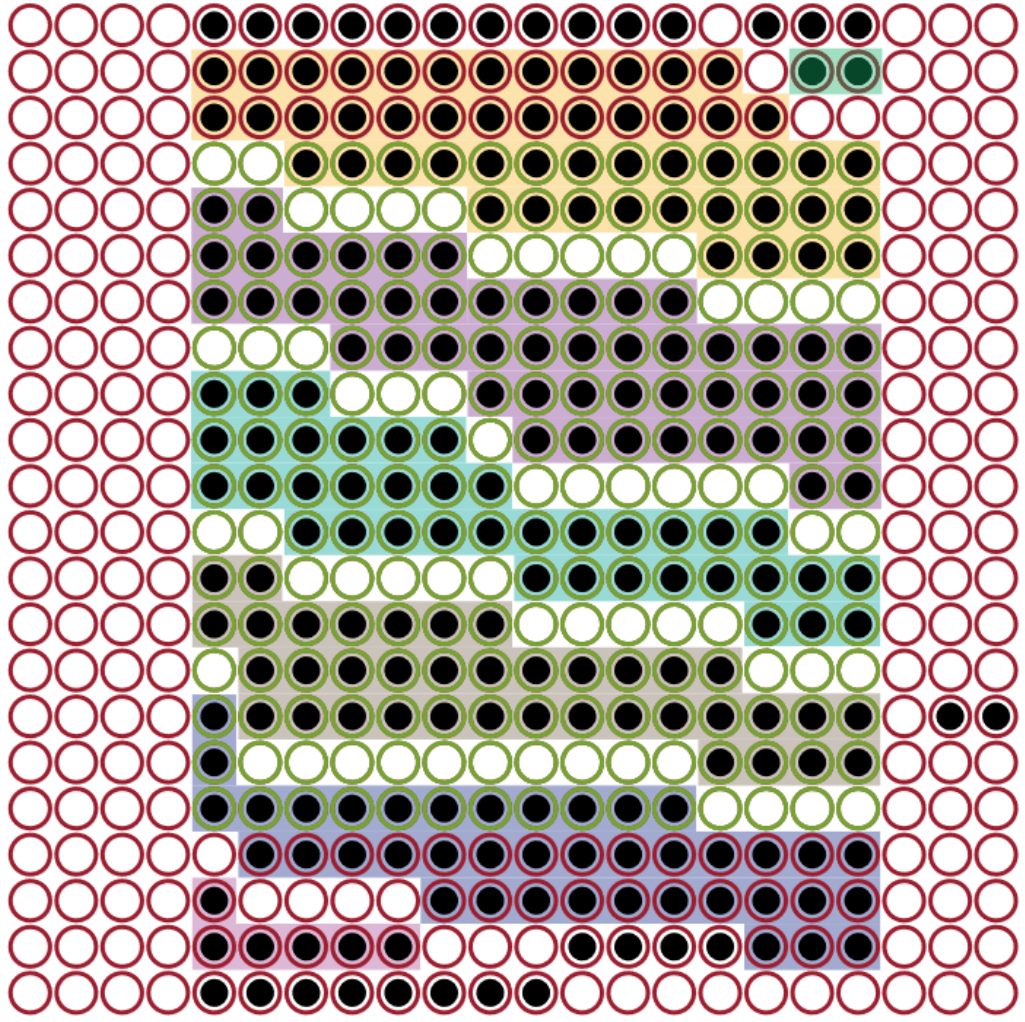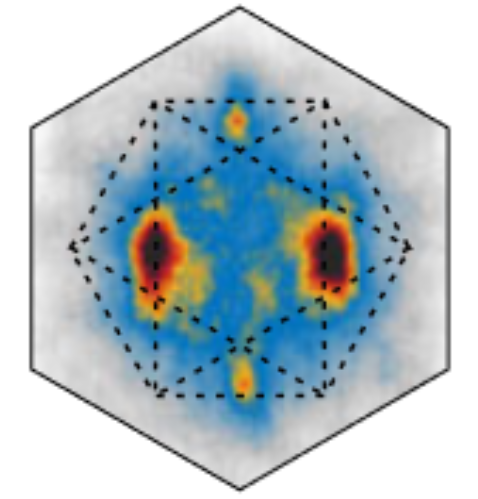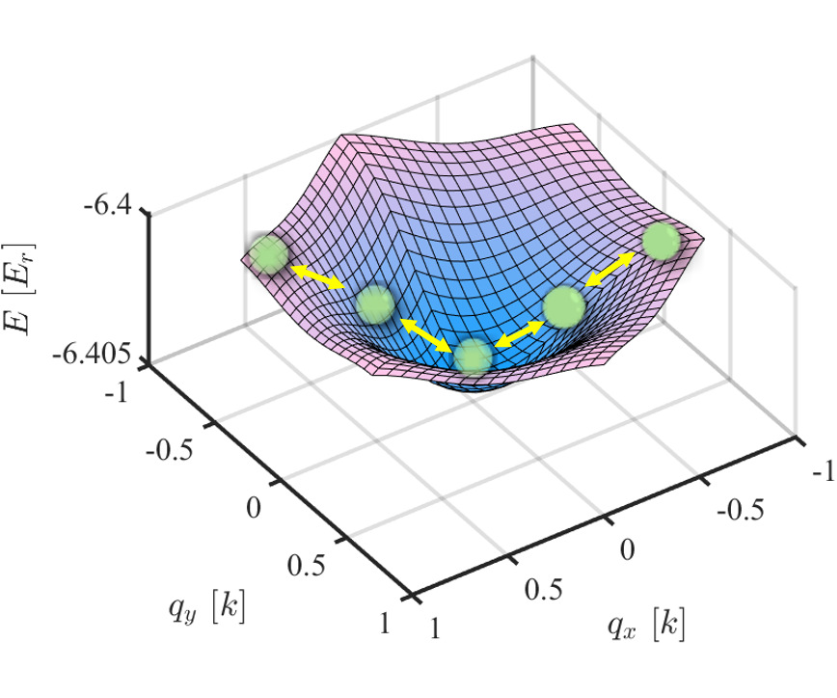Publications
Publications in reversed chronological order.
2023
-
 Universal Quantum Optimization with Cold Atoms in an Optical CavityMeng Ye, Ye Tian, Jian Lin, Yuchen Luo, Jiaqi You, Jiazhong Hu, Wenjun Zhang*, Wenlan Chen, and Xiaopeng LiPhysical Review Letters Sep 2023
Universal Quantum Optimization with Cold Atoms in an Optical CavityMeng Ye, Ye Tian, Jian Lin, Yuchen Luo, Jiaqi You, Jiazhong Hu, Wenjun Zhang*, Wenlan Chen, and Xiaopeng LiPhysical Review Letters Sep 2023Cold atoms in an optical cavity have been widely used for quantum simulations of many-body physics, where the quantum control capability has been advancing rapidly in recent years. Here, we show the atom cavity system is universal for quantum optimization with arbitrary connectivity. We consider a single-mode cavity and develop a Raman coupling scheme by which the engineered quantum Hamiltonian for atoms directly encodes number partition problems. The programmability is introduced by placing the atoms at different positions in the cavity with optical tweezers. The number partition problem solution is encoded in the ground state of atomic qubits coupled through a photonic cavity mode, which can be reached by adiabatic quantum computing. We construct an explicit mapping for the 3-SAT and vertex cover problems to be efficiently encoded by the cavity system, which costs linear overhead in the number of atomic qubits. The atom cavity encoding is further extended to quadratic unconstrained binary optimization problems. The encoding protocol is optimal in the cost of atom number scaling with the number of binary degrees of freedom of the computation problem. Our theory implies the atom cavity system is a promising quantum optimization platform searching for practical quantum advantage.
@article{ye2023universal, title = {Universal Quantum Optimization with Cold Atoms in an Optical Cavity}, author = {Ye, Meng and Tian, Ye and Lin, Jian and Luo, Yuchen and You, Jiaqi and Hu, Jiazhong and Zhang*, Wenjun and Chen, Wenlan and Li, Xiaopeng}, journal = {Physical Review Letters}, volume = {131}, number = {10}, pages = {103601}, year = {2023}, doi = {10.1103/PhysRevLett.131.103601}, url = {https://link.aps.org/doi/10.1103/PhysRevLett.131.103601}, } -
 Accelerating the Assembly of Defect-Free Atomic Arrays with Maximum ParallelismsShuai Wang†, Wenjun Zhang†, Tao Zhang, Shuyao Mei, Yuqing Wang, Jiazhong Hu, and Wenlan ChenPhysical Review Applied May 2023
Accelerating the Assembly of Defect-Free Atomic Arrays with Maximum ParallelismsShuai Wang†, Wenjun Zhang†, Tao Zhang, Shuyao Mei, Yuqing Wang, Jiazhong Hu, and Wenlan ChenPhysical Review Applied May 2023Defect-free atomic arrays have been demonstrated as a scalable and fully controllable platform for quantum simulations and quantum computations. To push the qubit size limit of this platform further, we design an integrated measurement and feedback system, based on field-programmable gate array (FPGA), to quickly assemble two-dimensional defect-free atomic array using maximum parallelisms. The total time cost of the rearrangement is first reduced by processing atom detection, atomic occupation analysis, rearrangement strategy formulation, and acousto-optic deflectors driving signal generation in parallel in time. Then, by simultaneously moving multiple atoms in the same row (column), we save rearrangement time by parallelism in space. To best utilize these parallelisms, we propose an alternative algorithm named the Tetris algorithm to reassemble atoms to arbitrary target array geometry from two-dimensional stochastically loaded atomic arrays. For an L-by-L target array geometry, the number of moves scales as L, and the total rearrangement time scales at most as L2. Although in this work we do not test on actual atoms, we simulate the performance of our FPGA system experimentally with all components integrated except for the atoms. We present the overall performance for different target geometries, and demonstrate a dramatic boost in rearrangement time cost and the potential to scale up defect-free atomic array to 1000 atoms in room-temperature platform and 10 000 atoms in cryogenic environment.
@article{wang2023accelerating, title = {Accelerating the Assembly of Defect-Free Atomic Arrays with Maximum Parallelisms}, author = {Wang†, Shuai and Zhang†, Wenjun and Zhang, Tao and Mei, Shuyao and Wang, Yuqing and Hu, Jiazhong and Chen, Wenlan}, journal = {Physical Review Applied}, volume = {19}, number = {5}, pages = {054032}, year = {2023}, rights = {All rights reserved}, doi = {10.1103/PhysRevApplied.19.054032}, url = {https://link.aps.org/doi/10.1103/PhysRevApplied.19.054032}, }
2021
-
 Evidence of Potts-Nematic Superfluidity in a Hexagonal sp2 Optical LatticeShengjie Jin, Wenjun Zhang, Xinxin Guo, Xuzong Chen, Xiaoji Zhou, and Xiaopeng LiPhysical Review Letters Jan 2021
Evidence of Potts-Nematic Superfluidity in a Hexagonal sp2 Optical LatticeShengjie Jin, Wenjun Zhang, Xinxin Guo, Xuzong Chen, Xiaoji Zhou, and Xiaopeng LiPhysical Review Letters Jan 2021As in between liquid and crystal phases lies a nematic liquid crystal, which breaks rotation with preservation of translation symmetry, there is a nematic superfluid phase bridging a superfluid and a supersolid. The nematic order also emerges in interacting electrons and has been found to largely intertwine with multiorbital correlation in high-temperature superconductivity, where Ising nematicity arises from a four-fold rotation symmetry C4 broken down to C2. Here, we report an observation of a three-state (Z3) quantum nematic order, dubbed “Potts-nematicity”, in a system of cold atoms loaded in an excited band of a hexagonal optical lattice described by an sp2-orbital hybridized model. This Potts-nematic quantum state spontaneously breaks a three-fold rotation symmetry of the lattice, qualitatively distinct from the Ising nematicity. Our field theory analysis shows that the Potts-nematic order is stabilized by intricate renormalization effects enabled by strong interorbital mixing present in the hexagonal lattice. This discovery paves a way to investigate quantum vestigial orders in multiorbital atomic superfluids.
@article{jin2021evidence, title = {Evidence of Potts-Nematic Superfluidity in a Hexagonal sp2 Optical Lattice}, author = {Jin, Shengjie and Zhang, Wenjun and Guo, Xinxin and Chen, Xuzong and Zhou, Xiaoji and Li, Xiaopeng}, journal = {Physical Review Letters}, volume = {126}, number = {3}, pages = {035301}, year = {2021}, publisher = {{American Physical Society}}, doi = {10.1103/PhysRevLett.126.035301}, url = {https://link.aps.org/doi/10.1103/PhysRevLett.126.035301}, }
2020
- PhysRevAImplementation of a Double-Path Multimode Interferometer Using a Spinor Bose-Einstein CondensatePengju Tang, Xiangyu Dong, Wenjun Zhang, Yunhong Li, Xuzong Chen, and Xiaoji ZhouPhysical Review A Jan 2020
We realize a double-path multimode matter wave interferometer with spinor Bose-Einstein condensate and observe clear spatial interference fringes as well as a periodic change of the visibility in the time domain, which we refer to as the time domain interference and which is different from the traditional double-path interferometer. By changing the relative phase of the two paths, we find that the spatial fringes first lose coherence and recover. As the number of modes increases, the time domain interference signal with the narrower peaks is observed, which is beneficial to the improvement of the resolution of the phase measurement. We also investigated the influence of initial phase configuration and phase evolution rate between different modes in the two paths. With enhanced resolution, the sensitivity of interferometric measurements of physical observables can also be improved by properly assigning measurable quantities to the relative phase between two paths.
@article{tang2020implementation, title = {Implementation of a Double-Path Multimode Interferometer Using a Spinor {{Bose-Einstein}} Condensate}, author = {Tang, Pengju and Dong, Xiangyu and Zhang, Wenjun and Li, Yunhong and Chen, Xuzong and Zhou, Xiaoji}, journal = {Physical Review A}, volume = {101}, number = {1}, pages = {013612}, year = {2020}, publisher = {{American Physical Society}}, doi = {10.1103/PhysRevA.101.013612}, url = {https://link.aps.org/doi/10.1103/PhysRevA.101.013612}, }
2019
-
 Asymmetric Population of Momentum Distribution by Quasi-Periodically Driving a Triangular Optical LatticeXinxin Guo, Wenjun Zhang, Zhihan Li, Hongmian Shui, Xuzong Chen, and Xiaoji ZhouOptics Express Sep 2019
Asymmetric Population of Momentum Distribution by Quasi-Periodically Driving a Triangular Optical LatticeXinxin Guo, Wenjun Zhang, Zhihan Li, Hongmian Shui, Xuzong Chen, and Xiaoji ZhouOptics Express Sep 2019Ultracold atoms in periodical-driven optical lattices enable us to investigate novel band structures and explore the topology of the bands. In this work, we investigate the impact of the ramping process of the driving signal and propose a simple but effective method to realize desired asymmetric population in momentum distribution by controlling the initial phase of the driving signal. A quasi-momentum oscillation along the shaking direction in the frame of reference co-moving with the lattice is formed, causing the formation of the mix of ground energy band and first excited band in laboratory frame, within the regime that the driving frequency is far less than the coupling frequency between ground band and higher energy bands. This method avoids the construction of intricate lattices or complex control sequence. With a triangular lattice, we experimentally investigate the influence of the initial phase, frequency, amplitude of the driving signal on the population difference and observe good agreement with our theoretical model. This provides guidance on how to load a driving signal in driven optical lattice experiment and also potentially supplies a useful tool to form a qubit that can be used in quantum computation.
@article{guo2019asymmetric, title = {Asymmetric Population of Momentum Distribution by Quasi-Periodically Driving a Triangular Optical Lattice}, author = {Guo, Xinxin and Zhang, Wenjun and Li, Zhihan and Shui, Hongmian and Chen, Xuzong and Zhou, Xiaoji}, journal = {Optics Express}, volume = {27}, number = {20}, pages = {27786--27796}, year = {2019}, doi = {10.1364/OE.27.027786}, }